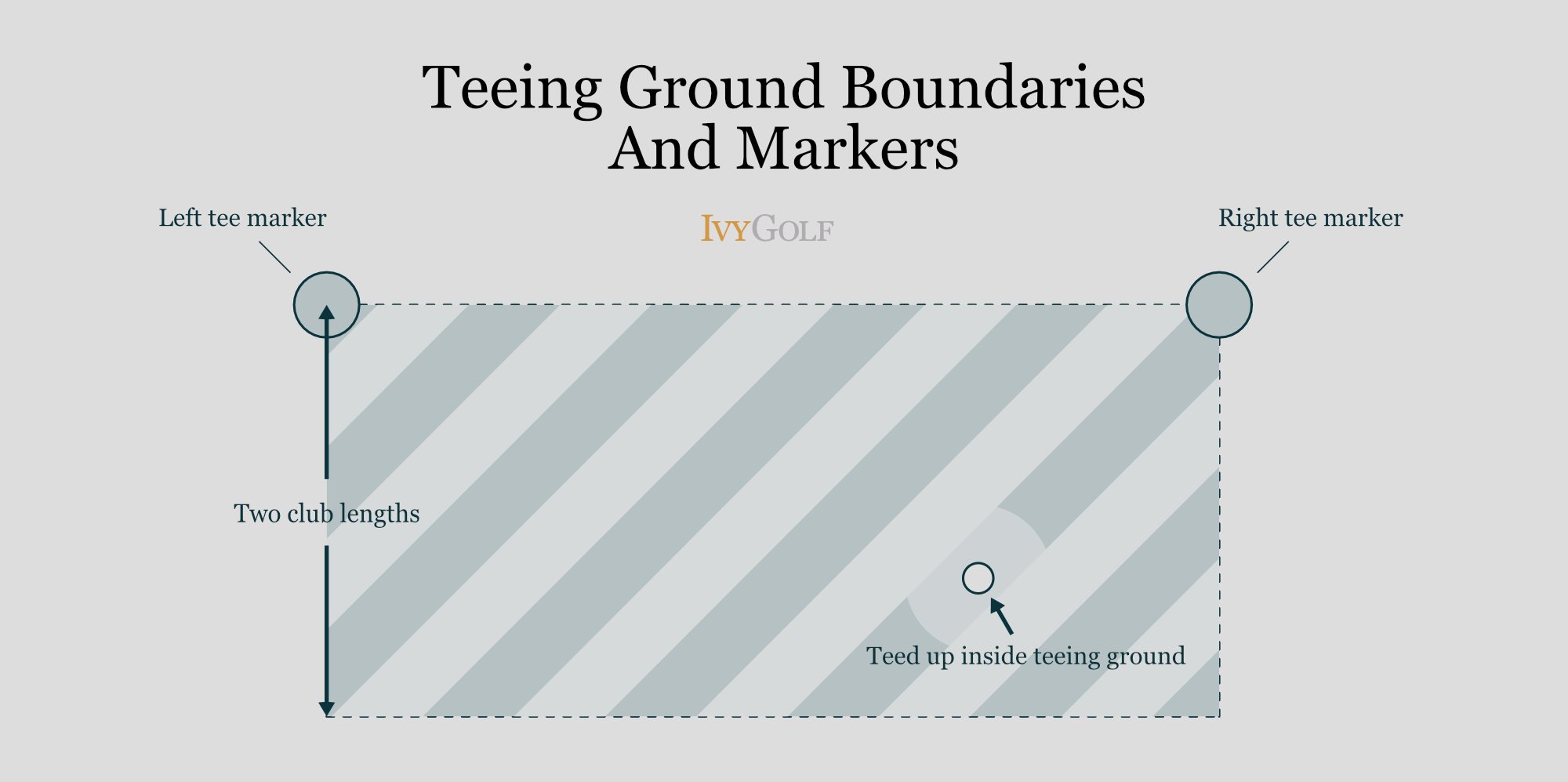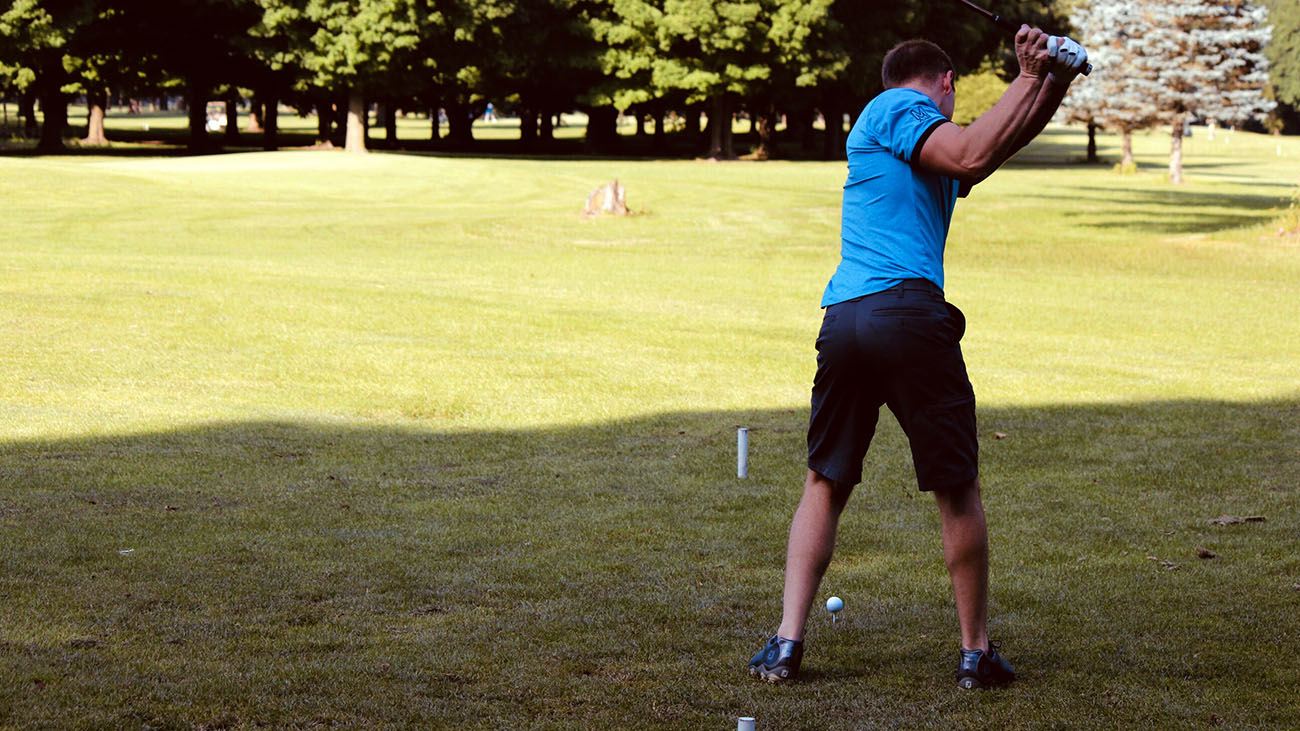The teeing ground is where is each hole of golf begins. Understanding the teeing ground markers and boundaries is vital, given that teeing off incorrectly often incurs a penalty.
The term “teeing ground” has been deprecated as of the 2019 rule book in favor of “teeing area”. We’re going to keep referring to it as teeing ground for this article since it remains the most common term among golfers.
“Tee box” refers to the area where several teeing grounds are grouped in close proximity. Tee box is an informal term that isn’t mentioned in the rule book but has become commonplace on the course.
For beginners especially, it isn’t always as straightforward as you’d hope to have confidence around the teeing ground, this is mostly due to the differing teeing ground conventions between clubs.
Boundaries and Markers
A pair of tee markers denote the teeing ground boundaries. These markers represent the front right and front left corners of a rectangle that is two club-lengths deep. You must tee your ball within this area.
Click to expand:

Boundaries And Where You Can Stand
Only the ball needs to be inside the boundaries. You’re free to tee up the ball at the edge of the boundary and stand outside it to take your shot.
Keep in mind that tee markers are considered fixed. You can’t move them if they obstruct the path of the ball or your swing, so work around them.
Marker Colors And Their Meanings
The markers that you should abide by are dependent on your skill level, or whether you’re playing under tournament conditions.
Most courses in the US adopt common color schemes to represent different yardages.
- Black and gold tee markers are for championship play; you’ll rarely see these at public courses.
- Blue tee markers are usually for the longest yardage, and as such, are used by skilled players with a low handicap. They’re typically suitable for club championship play.
- White tee markers are the middle-ground. Most often used by male players with a middle-to-high handicap.
- Red tee markers are most commonly located in front of the white tee markers. They offer the shortest yardage on the course and are sometimes referred to as “women’s tees” though that’s a term that is increasingly discouraged.
- Green tee markers indicate the teeing ground typically reserved for juniors and beginners. They offer even shorter yardage than red tee markers, and as such are great for finding your feet.
Despite the common adoption of these colors, the colors do differ between clubs and even more so between countries. It’s always best to check the conventions of the club before teeing off.
Teeing Ground Etiquette
Etiquette on the teeing ground is mostly just applying some common-sense.
Don’t tee up your ball until it’s your turn to play; even if you’re at the opposite corner, it’s bad manners.
When giving space to other golfers on the teeing ground, account for the fact that they’re allowed to stand outside of the boundaries to take their shot. If you think you might be too close, you probably are.
On the first tee, choose the order amongst yourselves or randomly. For each tee afterward, you should tee off in order of scoring from the previous hole. The golfer with the lowest score should tee off first.
Always be extremely cautious of others around you even when practicing. It’s not unheard of for inexperienced golfers to accidentally clip the ball while taking a practice swing. Golfers playing ahead of you should be well out of range before you begin setting up.
